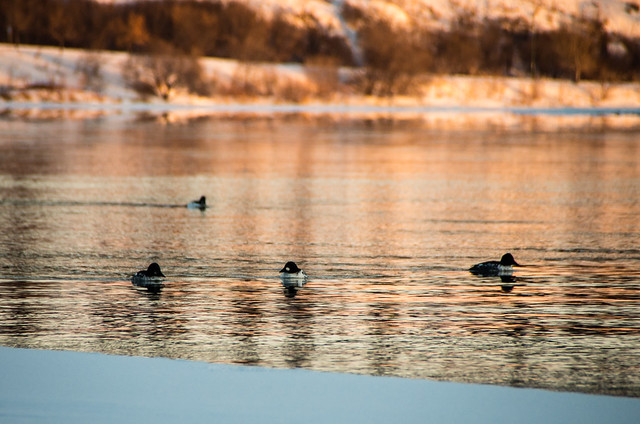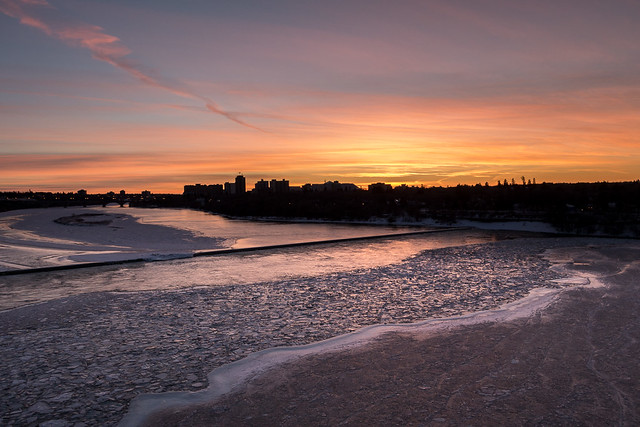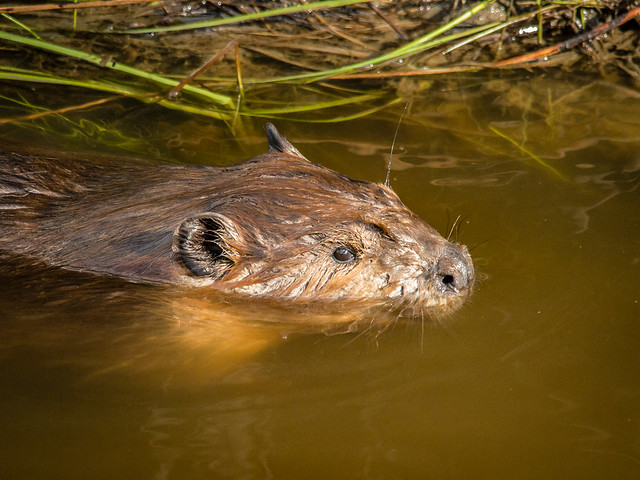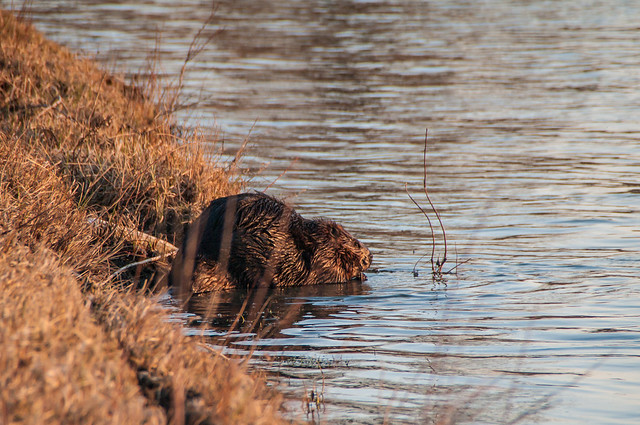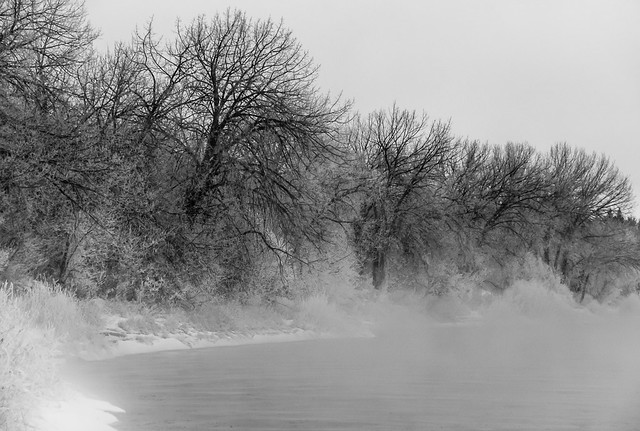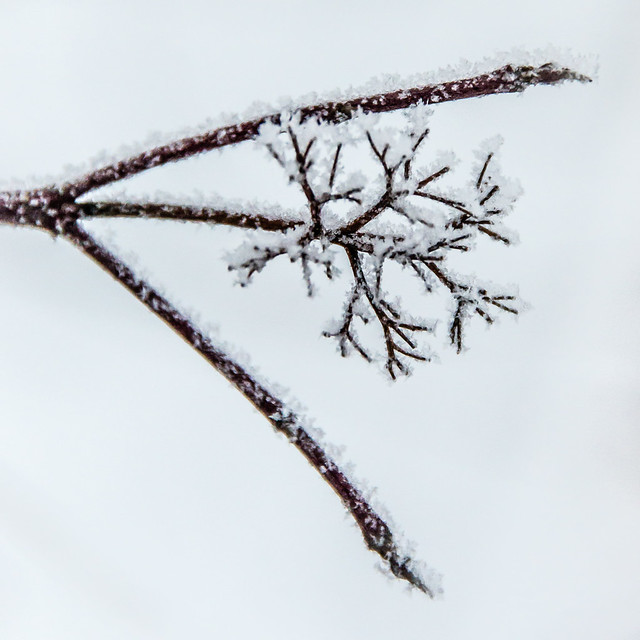Tuesday, 24 February 2015
EcoSask News, February 24, 2015
South SK Watershed Open Houses
The South Saskatchewan River Watershed Stewards will be hosting annual meetings and open houses in the following communities. Presentations will look at invasive plants, zebra mussels, water well decommissioning, and farm stewardship funding.
Feb. 25, Osler – North Watershed Advisory Committee
Feb. 26, Abbey – West Watershed Advisory Committee
Mar. 5, Beechy – Lake Diefenbaker Watershed Advisory Committee
Urban Ag Films, Feb. 27
The Saskatoon Food Council will be showing the 10 finalist films in this year’s Real Food Media Project at 7 pm, Feb. 27, at Station 20 West. The films showcase individuals who are building a sustainable food system.
Green Drinks Regina, Mar. 4
Join Green Drinks Regina from 6-8 pm, Mar. 4, at Abstractions Café for a screening of the movie Adventures in Permaculture.
Environmental Education, Mar. 6
Dr. Paul Hart, University of Regina, will speak on Overall Trajectories of the Environmental Education Field from 2:30-4 pm, Mar. 6, in Room 1235, College of Education, U of S.
Wanted: Master Composters (Regina)
PV Waste Solutions will be partnering with the Saskatchewan Waste Reduction Council to bring the Master Composter Program to Regina. The course on June 6-7 will offer a combination of in-depth instruction and hands-on training.
Urban Wind Power
A City of Saskatoon report concludes that wind power is not a viable municipal energy option. SaskWind disagrees and believes that a community-owned wind turbine project located outside Saskatoon Light & Power’s franchise area is an economically attractive way for the City to meet its green energy goals.
Craik Eco Village
Craik reversed its population decline by inviting people to build green homes on $1 unserviced lots.
Waste Industry Shake-Up
Five disruptive measures that could shake up the waste industry - waste reprocessing, retailer responsibility, clever recycling technology, and more.
Green Infrastructure
Singapore can teach us all about using green urban infrastructure to mitigate droughts.
EcoSask News is a weekly round-up of local news and events. Email us if you have items you would like us to include. Additional upcoming events can be found on our Calendar.
You can follow EcoFriendly Sask by liking us on Facebook, following us on Twitter, or by email (top right corner).
Tuesday, 17 February 2015
EcoSask News, February 17, 2015
Meet a Burrowing Owl, Feb. 21
Greg Fenty will introduce Sage, a Burrowing Owl, at 1 pm, Feb. 21, at Wild Birds Unlimited.
Permablitzes, Mar. 7
Curious about permaculture? Then attend Seedy Saturday at St. Mary’s Wellness and Education Centre from 10 am – 4 pm, Mar. 7. Permaculture Saskatchewan will have a booth and will be making a presentation on permablitzes.
South Sask River Watershed Stewards AGM, Mar. 31
The South Saskatchewan River Watershed Stewards will be holding their AGM and Open House on March 31 in Outlook. Presentations will cover zebra mussels, Pike Lake’s watershed initiative, the Lake Diefenbaker management plan, and more.
Paddling Symposium, Apr. 25
The 2015 Saskatchewan Paddling Symposium will be on April 25 in Saskatoon. The keynote speaker is Karsten Heuer who completed a cross-Canada canoe and sailing trip to meet Farley Mowat.
Grants for Urban Agriculture, Environment, Recreation
The Co-op will contribute up to $1 million annually in grants to support urban agriculture, environmental conservation, and recreation spaces in western Canada. Applications must be submitted online between April 1 and May 15.
Earth Dumplings?
Permaculture Saskatchewan is considering offering a workshop on making seed balls/seed bombs at this year’s NatureCity Festival. Contact Joanne Blythe if you’d like to help.
EcoFriendly Action Grants
In the past month, we’ve supported the following groups with an EcoFriendly Action Grant:
Crystal’s Home, North Battleford - $500 for a small space community container garden where youth will learn about recycling, composting, rain harvesting, nutrition, and teamwork
 Ecoquest, Saskatoon Public Schools - $500 to support bicycle-generated power and solar power in the classroom as part of their Student Action for a Sustainable Future project
Ecoquest, Saskatoon Public Schools - $500 to support bicycle-generated power and solar power in the classroom as part of their Student Action for a Sustainable Future projectSaskatchewan Eco Network - $500 to support the 2015 Saskatoon Environmental Film Festival
Saskatoon Nature Society - $1,000 to support the publication and distribution of an updated edition of their Guide to Nature Viewing Sites in and around Saskatoon
Wild About Saskatoon - $5,000 to support the 2015 NatureCity Festival
EcoSask News is a weekly round-up of local news and events. Email us if you have items you would like us to include. Additional upcoming events can be found on our Calendar.
You can follow EcoFriendly Sask by liking us on Facebook, following us on Twitter, or by email (top right corner).
Thursday, 12 February 2015
The Beaver Manifesto
“The fact that beavers still exist in North America, and in Europe for that matter, is nothing short of a miracle. Their tenacious nature and ability to survive major geologic and climatic shifts is amazing in its own right, but their ability to survive a level of overexploitation that would have crippled many other species is a testament to their ecological adaptability.” (The Beaver Manifesto)
Glynnis Hood says, “We want to co-exist with wildlife, but we want it to be well-behaved wildlife, much like our lawn ornaments.” Her book, The Beaver Manifesto, provides a fascinating glimpse of the complex relationship between humans and beavers over the centuries.
Adaptation and Survival
Ancestors of the modern beaver first appeared on the scene between 54 and 38 million years ago. “By the time early hominid ancestors appeared, just short of 5 million years ago, early beavers had already learned to cut wood and build homes.”*
Early North American beavers varied in size from small ones weighing less than 1.5 kilograms to a giant beaver that was 3 metres long and the size of a female black bear.
Beavers’ adaptability has helped them to succeed against all odds and in North America they can be found from the Gulf of Mexico to the Arctic Ocean. They control their environment by building dams and creating deep ponds that don’t freeze in winter.
As semi-aquatic animals, they can use the water to transport their food. An underwater pantry means the food is accessible throughout the year. Their lodges, surrounded by a watery moat, provide a safe place to raise their young.
Felt Hats and Beaver Pelts
The beavers’ greatest adversary has been and remains human beings. When Europeans first arrived in North America, there were an estimated 60-400 million beavers across the continent. The explorers were delighted to spot this economic opportunity as they had already almost wiped out the European beaver population in their quest for fur, food, and medicine. Tall felt hats had recently become popular and there was a ready market for beaver pelts.
Hunters and trappers followed the beavers up the Canadian waterways, moving further inland as beavers became scarce and opening up the country to immigration and settlement. It was the start of Canada’s economic reliance on natural resources.
The Hudson Bay Company’s records show that over 4.7 million beaver pelts reached British auction houses between 1769 and 1868. And these figures don’t include the pelts that were judged sub-standard and discarded.
The beavers survived 300 years of commercial exploitation, but only just. By 1870, very few remained. Their numbers continued to decline as wetlands were drained, towns established, and farmland extended. But beavers are resilient, and they’ve made an impressive comeback.
Environmental Engineers
The return of the beaver brings benefits for nature and humans. As beavers move into new territory, they dam a stream creating a pond for their lodge. Willows, aspens and other trees begin to grow around the edge of the pond. The slow-moving water is an ideal habitat for fish, while birds and wildlife benefit from the new growth of grass and shrubs.
Beavers also restore land that has been damaged. Glynnis Hood tells the story of Eric Collier and his family who moved to an area near Williams Lake in the 1930s. “When they first moved to the area, streams were dry, wildlife was depleted and forest fires were a constant threat.” Honouring his grandmother’s request to bring beavers back to the land, Collier started rebuilding the beaver dams and a conservation officer dropped off two pairs of beavers. By 1950, “the entire valley was vibrant with wildlife and wetlands.”
Beavers mitigate the effects of extended drought. Hood observed beavers on the Prairies and found that the animals dug channels in the bottoms of ponds to direct what water there was to where it was needed. “By the time the drought of 2002 was in full swing, the ponds that still contained water were most often those occupied by beavers.”
Beaver ponds help regulate storm water drainage, mitigating the risk of flash floods. Their engineering efforts help replenish the water table and restore streams to a more natural state.
Conflict Management
Municipal officials and riverside residents are quick to blame beavers for damaging trees, flooding roads, and creating ponds where people don’t want them. However, removing a beaver dam or trapping and killing the beavers is an ineffective, short-term solution. Beavers will quickly rebuild the dam and other beavers will repopulate the area.
Banding trees with metal and installing beaver bafflers on culverts to maintain a water level in the pond that is adequate for the beavers without causing flooding and problems for other species is far more effective.**
Glynnis Hood provides a balanced perspective: “It is frustrating to have expensive facilities, trees and equipment damaged, but it is also important to appreciate all the ecological benefits that are part of a beaver’s world. In many situations, it is also time to stop seeing the beaver as a pest and more as a pilot to navigate us through a warming climate and the complex ecological challenges it brings. . . .
“We are still consumers of natural resources, and by our nature as human beings we always will be, in order to survive. But how we manage those resources is critical. Loving nature to death while denying its needs is not a viable approach. To manage the conflicts between wildlife and humans requires an experiential understanding of our wild neighbours and the creativity, time and adaptability to do the right thing while we still have a chance.”
 * Unless specified otherwise, quotes are from The Beaver Manifesto
* Unless specified otherwise, quotes are from The Beaver Manifesto**“In many areas, specialized flow-control devices have been installed to allow water to be drained from beaver ponds quietly so that beavers don’t hear the sound of running water that drives them to action. They remain none the wiser and are not inspired to plug the culvert and raise the level of their pond to new heights. The ponds stay at stable and ecologically valuable levels, happy beavers remain on the landscape and infrastructure such as roads and trails remains intact.”
Additional Information
Glynnis Hood, The Beaver Manifesto, Rocky Mountain Books, 2011, is available from the Saskatoon Public Library and McNally Robinson Booksellers
“beavers are getting new respect these days. Across the West, they are being welcomed into the landscape as a defense against the withering effects of a warmer and drier climate.” (New York Times, 2014)
“Using their skills as natural builders and brilliant hydro-engineers, beavers are being recruited to accomplish everything from finding water in a bone-dry desert to recharging water tables and coaxing life back into damaged lands.”(PBS videos and infographics)
Urban beavers are part of a storm water management policy in this Oregon neighbourhood (7:40 minute video)
Grey Owl’s cabin in Prince Albert National Park is accessible on foot or by boat. There is also a film about Grey Owl.
Tuesday, 10 February 2015
EcoSask News, Feb. 10, 2015
Green Drinks Saskatoon, Feb. 13
Green Drinks Saskatoon will be meeting at 5:30 pm, Feb. 13, at Nino's on Broadway.
Friday, Feb. 13, is also International Winter Bike to Work Day, so why not ride your bike to Nino's?
Great Backyard Bird Count, Feb. 13-16
Help create a real-time snapshot of where birds are by participating in the Great Backyard Bird Count. Everyone is welcome to participate.
Landscape Photography Workshop, Feb. 14 (Regina)
Branimir Gjetvaj will be offering a workshop on the art of landscape photography from noon to 3 pm, Feb. 14, in Regina.
Nature Photography, Feb. 15
Glen Grambo will be sharing his nature photographs and answering questions at Wild Birds Unlimited at 1 pm, Feb. 15. Glen is an award-winning natural history photographer and manages Don's Photo in Saskatoon.
Nature Regina, Feb. 16 (Regina)
Kim Mann will speak on Observations at the NW Stormwater Retention Pond at the Nature Regina meeting at 7:30 pm, Feb. 16.
Agriculture and Wild Nature, Feb. 19
Branimir Gjetvaj, environmental photographer and biologist, will discuss the effects of increased agricultural production on land cover and biodiversity at 7:30 pm, Feb. 19, as part of the Saskatoon Nature Society’s monthly program.
Forestry Farm Birding, Feb. 22
Join the Saskatoon Nature Society on a birding field trip at the Forestry Farm from 1:30-3:30 pm, Feb. 22.
Sage Grouse Conservation in the US, Feb. 24
As part of SK-PCAP’s Native Prairie Speaker Series, there will be a webinar on greater sage-grouse conservation efforts in the US and the Sage Grouse Initiative at 3 pm, Feb. 24.
Conservation Awareness Day, Feb. 26 (Val Marie)
Nature Saskatchewan is holding a Conservation Awareness Day with supper and presentations in Val Marie at 5:30 pm, Feb. 26. 2015
Waste ReForum, Apr. 22-24
The Saskatchewan Waste Reduction Council’s conference on Apr. 22-24 in Saskatoon includes three-hour workshops on Creating Green Events and Bridging Connections for Construction/Demolition Materials.
No-Fuss Water Treatment
The town of Vonda treats its waste water with two cells and an artificial wetland. The wetland was constructed in 1983 in collaboration with Ducks Unlimited and has been trouble-free, requiring no changes or modifications.
U of S GHG Inventory
The University of Saskatchewan’s 2014 GHG Inventory is now available online and indicates a 2% decrease in total emissions.
Volunteer at the Zoo
The Saskatoon Zoo Society is looking for volunteers to assist at special events and as educational interpreters. Register online now. There will be an information session at 6 pm, May 27.
EcoSask News is a weekly round-up of local news and events. Email us if you have items you would like us to include. Additional upcoming events can be found on our Calendar.
You can follow EcoFriendly Sask by liking us on Facebook, following us on Twitter, or by email (top right corner).
Tuesday, 3 February 2015
EcoSask News, February 3, 2015
Transition Town Workshop, Feb. 5 (Regina)
Regina Green Drinks and Regina EcoLiving are co-hosting a transition town workshop from 5:30-7:30 pm, February 5, in Abstractions Café.
Journal Launch & Awards Presentation, Feb. 25 (Regina)
Join SaskOutdoors from 4:30-6:30 pm, Feb. 25, as they launch the third issue of their publication, Of Land & Living Skies, and make an awards presentation.
Flying WILD, Mar. 7 (Regina)
Educators are invited to attend a Flying WILD workshop in Regina on March 7. Flying WILD focuses on migratory birds and includes 43 lesson plans and student service learning projects.
NatureCity Festival
Sign up now to participate in Saskatoon's 3rd annual NatureCity Festival. Host an event or volunteer to assist with festival organization.
Wanted: Wildlife Rehabilitation Interns
Living Sky Wildlife Rehabilitation is offering students the opportunity to observe and participate in rehabilitating wildlife as an intern during June, July, and August.
Richard St. Barbe Baker Afforestation Area
Julia Adamson wants to clean up and save the Richard St. Barbe Baker Afforestation Area near the Southwest Off-Leash Dog Park.
 |
| Many off-grid houses in Nepal have a solar panel for lighting and to recharge cell phones. |
Cowessess Wind Energy Storage Project
Cowessess First Nation’s wind energy storage project is providing invaluable information about smoothing out the ebbs and flows of wind energy. It could also have useful off-grid applications.
Fracking & Earthquakes
A significant earthquake in northern Alberta was likely caused by fracking.
Mending our Ways
The clothing industry is one of the filthiest on the planet. The current edition of the National Resources Defense Council’s magazine takes a look at the industry’s potential sustainability.
Wind Power in Denmark
39.1% of the electricity used in Denmark came from wind power in 2014. They hope to increase that figure to 50% by 2020.
EcoSask News is a weekly round-up of local news and events. Email us if you have items you would like us to include. Additional upcoming events can be found on our Calendar.
You can follow EcoFriendly Sask by liking us on Facebook, following us on Twitter, or by email (top right corner).
Subscribe to:
Posts (Atom)
